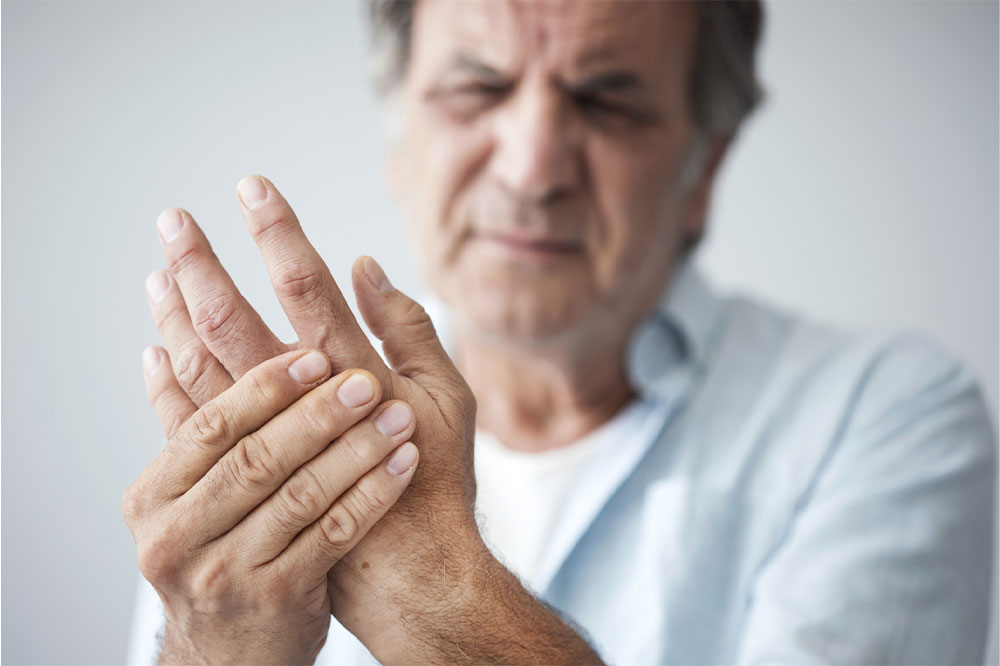
Understanding arthritis and its types and symptoms
Arthritis causes swelling and pain in the joints. It also causes joint discomfort and stiffness, which usually increases with age and joint inflammation. Arthritis might also affect one or several joints. There are more than a hundred varieties of the condition, each with different causes and treatments. However, the most commonly diagnosed form of arthritis is osteoarthritis (OA), rheumatoid arthritis (RA), and psoriatic arthritis. Gout is also rather rare in this condition.
Symptoms
The symptoms of arthritis usually develop over time but can occasionally come on unexpectedly. RA usually develops between 30 and 50 years, but it can impact kids, teenagers, and young adults, too. On the other hand, o steoarthritis is more common among overweight people. It causes joint discomfort, stiffness, and edema. Symptoms could worsen in the morning or after a long rest period.
Osteoarthritis symptoms:
- Restricted range of motion that occasionally disappears
- Bending clicks or pops
- Joint muscle weakness
- Joint buckling or instability
- Bony growths in the fingers
- Knee grating or scraping
Psoriatic arthritis symptoms:
- Morning stiffness
- Swelling
- Painful joints all over the body
- Finger and toe swelling
- Achy muscles and tendons
- Rough skin spots that worsen with joint pain
- Itchiness
- Fatigue
- Nail pits
- Redness of the eyes
- Pain in the eyes
- Nail bed separation (uveitis)
RA symptoms:
- Morning stiffness that lasts for about 30 minutes or more
- A few afflicted joints, mostly in the feet and hands
- Affected joints in other parts of the body
- Fatigue
- A mild fever
- Eye and mouth inflammation
- Heart muscle and blood vessel inflammation
- Low red blood cell count
Causes of arthritis
Arthritis can be brought on by:
- Overuse of a joint
- Age, OA is most common in adults over the age of 50 years
- Injuries
- Overweight
- Autoimmune diseases
- Genes or ancestry
- Weakness of the muscles
Osteoarthritis
OA is one of the most common kinds of arthritis. Infections or joint injuries can accelerate the normal deterioration of cartilage. Bone cartilage is a rigid but flexible connective tissue that protects joints by cushioning pressure and shock caused by movement. A loss of normal cartilage tissue causes arthritis. A family history of OA increases the likelihood of acquiring it.
Psoriatic arthritis
Psoriatic arthritis affects certain people who have psoriasis, a condition characterized by red areas of skin covered with silvery scales. Psoriasis usually appears years before psoriatic arthritis. For some, joint issues occur earlier or simultaneously as the skin patches. Psoriatic arthritis causes joint pain, stiffness, and edema, not exempting your fingertips and spine from its reach. Psoriasis and psoriatic arthritis have periods of flares and remissions. Sadly, it has no cure, and treatments can only aim to reduce discomfort. Moreover, it can become severe if left untreated.
Rheumatoid arthritis
RA is an autoimmune illness that occurs when the body’s tissues are attacked by the immune system, causing inflammation of the joints and other organs. This inflammatory reaction damages the synovium, a soft tissue that nourishes and lubricates the joints, eventually damaging bone and cartilage. The reason for the immune system’s assault is unknown. There are genetic markers that raise the chance of RA fivefold.
Diagnosis of arthritis
If you’re unclear who to visit for an arthritis diagnosis, start with a physician. They will examine the joints for fluid, warmth, and range of motion. The doctor may suggest a visit to an arthritis specialist. If you have significant symptoms, you should see a rheumatologist for a quicker diagnosis and treatment. The doctor can determine the type of arthritis by looking at blood inflammation levels and aspirating and analyzing joint fluids.
Anti-cyclic citrullinated peptide (CCP), rheumatoid factor (RF), and antinuclear antibody (ANA) blood tests are additional popular diagnostic procedures that are sometimes recommended. Moreover, X-rays, MRIs, and CT scans are commonly used to view bones and cartilage. These scans help rule out other reasons, such as bone spurs.
Treatment
The main objective of therapy is to relieve pain and avoid further joint deterioration.
Generally, arthritis therapy includes:
- Supplements
- Physical therapy
- Occupational therapy
- Healthy eating habits
- Frequent exercise and weight reduction
- Hot and cold compresses
- Mobility aids such as canes or walkers
While arthritis has no cure, the correct therapy can significantly reduce symptoms. Along with the prescription, you may need to adopt a variety of lifestyle modifications that may aid in the management of the condition. Understanding arthritis can make a better life in the long run.




